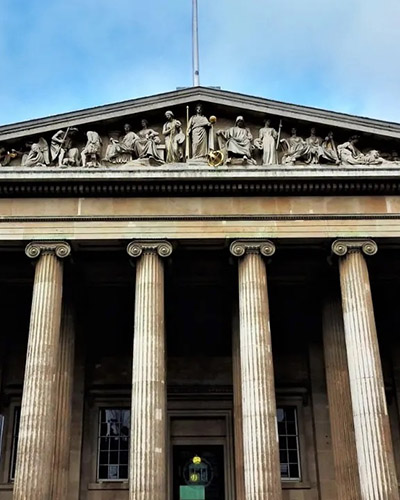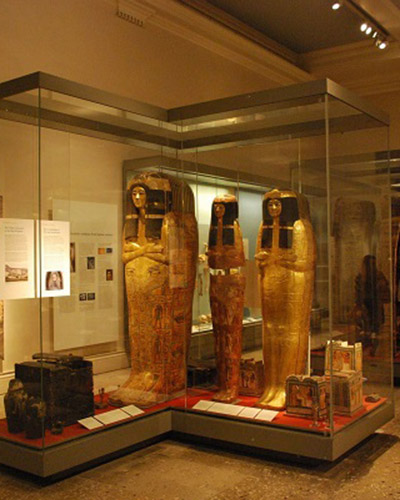Acropolis Museum
The Acropolis Museum (Greek: Μουσείο Ακρόπολης, Mouseio Akropolis) is an archaeological museum
focused on the findings of the archaeological site of the Acropolis of Athens. The museum was built
to house every artifact found on the rock and on the surrounding slopes, from the Greek Bronze Age
to Roman and Byzantine Greece. It also lies over the ruins of a part of Roman and early Byzantine
Athens.
.jpg)
.jpg)
History
The Acropolis Museum (Greek: Μουσείο Ακρόπολης, Mouseio Akropolis) is an archaeological museum
focused on the findings of the archaeological site of the Acropolis of Athens. The museum was built
to house every artifact found on the rock and on the surrounding slopes, from the Greek Bronze Age
to Roman and Byzantine Greece. It also lies over the ruins of a part of Roman and early Byzantine
Athens.
The museum was founded in 2003, while the Organization of the Museum was established in 2008. It
opened to the public on 20 June 2009. More than 4,250 objects are exhibited over an area of 14,000
square metres. The Organization for the Construction of the new museum is chaired by Aristotle
University of Thessaloniki Professor Emeritus of Archaeology, Dimitrios Pandermalis.
.jpg)
The first museum was on the Acropolis; it was completed in 1874 and underwent a moderate
expansion
in the 1950s. However, successive excavations on the Acropolis uncovered many new artifacts
which
significantly exceeded its original capacity.
An additional motivation for the construction of a new museum was that in the past, when Greece
made
requests for the return of the Parthenon Marbles from the United Kingdom, which acquired the
items
in a controversial manner, it was suggested by some British officials that Greece had no
suitable
location where they could be displayed.[3] Creation of a gallery for the display of the
Parthenon
Marbles has been key to all recent proposals for the design of a new museum.
.jpg)
Competitions for the new museum
The first architectural competition to design a new museum was held in 1976 and was limited to
participants from Greece. Both the 1976 competition and one that followed it in 1979 failed to
produce any results mainly because the plots of land selected for the proposed constructions
were deemed unsuitable.
In 1989, a third competition for the design of the new Acropolis Museum was announced that would
be international. A choice of three possible sites was provided. This competition was won by the
Italian architects, Manfredi Nicoletti and Lucio Passarelli.
.jpg)
In 1989, a third competition for the design of the new Acropolis Museum was announced that would
be international. A choice of three possible sites was provided. This competition was won by the
Italian architects, Manfredi Nicoletti and Lucio Passarelli.
After delays throughout the 1990s, work on the construction of the museum based on this third design
progressed to the stage of excavations for the foundations, but these were stopped due to apparently
sensitive archaeological remains on the site, leading to annulment of the competition in 1999. In
retrospect, the location of the new museum was rather straightforward: the large lot of the unused
"Camp Makrygianni" gendarmerie barracks, opposite the Theater of Dionysus. The barracks were built
on public land and a limited number of expropriations of surrounding private houses were needed to
free up the necessary space. The main building of the old barracks, the neoclassical "Weiler
Building", has been renovated and houses the Museum of the Center for the Acropolis Studies.
.jpg)
The fourth competition had made no provision for the preservation of the ancient site. These were met to a
degree only after local and international (ICOMOS) campaigners exposed this oversight and it became the
final competition. The new plans were adjusted so that the building was elevated above ground, on pillars.
Competition was open only to architectural practices by invitation and it was won by New York–based
architect, Bernard Tschumi, in collaboration with
the Greek architect Michael Photiadis. Excavation has revealed two layers of modest, private roadside houses
and workshops, one from the early Byzantine era and another from the classical era. Once the layout and
stratigraphy of the findings were established, suitable locations for the foundation pillars were
identified. These traverse the soil to the underlying bedrock and float on roller bearings able to withstand
a Richter scale magnitude 10 earthquake.
.jpg)
.jpg)
.jpg)
.jpg)
.jpg)
.jpg)







